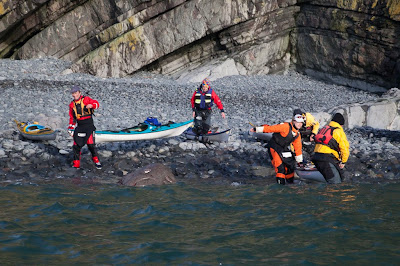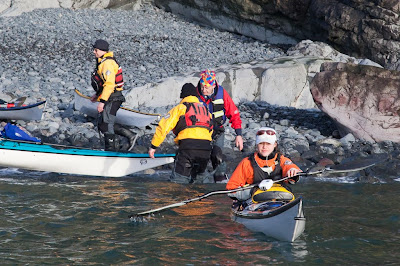
We had tried on two occasions to go paddling with John, our friend from Swanage, who was up visiting family over the Christmas holiday.

Unfortunately the snows came down on both occasions. On the first, I didn't even get out my drive. On the second, some main roads were clearer of snow and I made it to Largs on the Ayrshire coast by avoiding the 31m direct route over the hills and taking a 48mile detour by Greenock and the coast. Unfortunately, John was well and truly snowed in at Aberfoyle in the Trossachs hills.

It was freezing cold when I met with the Ayrshire contingent yesterday morning at the public slipway at Largs Marina on the Clyde.

The bulk carrier Wah Shan (length 289m, breadth 45m) had just made her way down the Largs Channel to Hunterston Jetty where she would offload her cargo of coal. She was accompanied by the tugs Svitzer Milford (30m x 11m) and Ayton Cross (31m x 12m).

The next vessel to cross our bows was the UK Border Agency cutter HMCC Seeker.

She was on the prowl for smugglers or illegal aliens. We may have kept a low profile but so did she. She was not transmitting any AIS information. She is 42m long and has a top speed of 26 knots.

We still hadn't cleared the Largs channel and now the Calmac Great Cumbrae ferry, the MV Loch Shira. Unlike the other ships we saw, the Loch Shira was Clyde built (2007) in the Ferguson's yard, just up the coast in Port Glasgow. She is 54m x14m.
















































